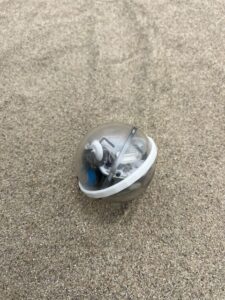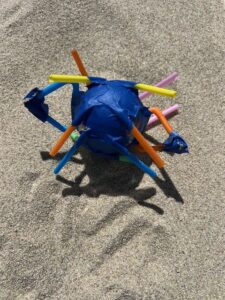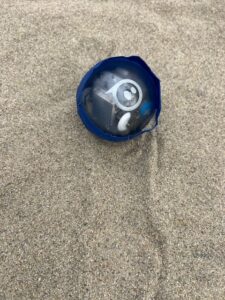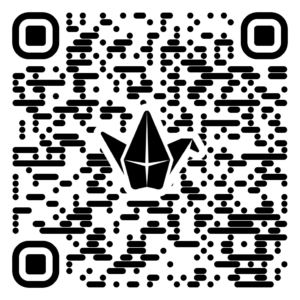March 29 :: Space Science :: Space Rovers
🚀 Sphero Rover Tread Exploration Workshop: Moon & Mars Edition
🎯 Objective: Design and test tread modifications for Sphero Bolt robots to navigate a simulated Moon and Mars surface. This inquiry-based, hands-on workshop encourages creative problem-solving through engineering, prototyping, and testing traction systems on simulated extraterrestrial terrain. 🌌🛠️
What is Regolith?
Spring Tire Rover Wheels
Modern Mars Rover Wheels
Rover Wheel Testing
Explore NASA Wheels here
Why do different wheels or treads work better in different environments? 🤔
What makes Moon or Mars terrain challenging? 🪨🌕
🌑 Step 1: Get in Groups :: Ask & Imagine
How can we modify the smooth Sphero Bolt to move better across simulated Moon and Mars terrain? 🛞
What materials or shapes give better grip in sand or over rocks? 🧩
🛠️ Step 2: Gather & Plan
🎒 Available materials include:
🧤 Cut balloons (to stretch around the Sphero for friction)
🔵 Blue tape (to build paddle-like extensions)
🪢 Rubber bands, string, straws, foam, pipe cleaners
✂️ Scissors, glue dots, tape, and cardboard strips
🖨️ 3D-printed treads
🔧 Step 3: Design Your Tread System
🧱 Wrap balloons around the Sphero Bolt for a base layer of traction.
🔩 Use tape or other materials to create paddles, ridges, or spikes.
🧠 Get creative with how the treads help grip, push, or crawl across the test terrain
⚙️ Sphero Test Samples
3d printed ring

Balloon Wrap with Velcro dots

Very aggressive straw legs

Tape scoops

Early Moon Rover Wheel Tests

1960’s Prototype wheels made by GM, DRL, and Goodyear for SLRV. Courtesy of Dave Glemming.

Various small scale lunar vehicles with articulated frames and unconventional running gear (Bekker 1962, Bekker 1963). The vehicle on the left has high width to diameter wheel ratio, the middle vehicle uses screw propulsion, and the right vehicle has spaced link tracks. Courtesy of Don Freidman.
Step 4: Download the Sphero Play App

🍏 Apple

🤖 Android

Select Sphero Bolt

🌌 Step 4: Test Track Challenge
Take your Sphero to the planetary surface test track, which includes:
🏜️ Regular sand
🌫️ Kinetic (moon) sand
🪨 Small rocks and gravel
🧗 A foamboard ramp coated in sand
🌌 Step 5: Review
Can your rover move across the terrain? 🚧
Which materials helped most with traction? 🛞
How did the Sphero handle the arch incline/decline? ⛰️
What would you change for the next design? 🔁
🧪 Science Connection: Material Science in Space
In space exploration, choosing the right materials is critical: 🧬
Rovers need flexible yet durable tires that can survive freezing temperatures, dust storms, and sharp rocks. ❄️🌪️
Materials like aluminum alloys, titanium, and carbon fiber are often used for strength and weight balance. 🛠️
Engineers must test materials in vacuum chambers and cold rooms to simulate space. 🌡️🌌
💭 Questions:
What material properties did you look for when choosing your design materials? 🤓
How do your design choices reflect what real scientists must consider? 🧑🔬
🚀 Careers That Explore Beyond Earth
Interested in helping build the next rover? These careers make it happen: 🌟
Robotics Engineer – Designs and builds robotic systems like Sphero or Perseverance 🤖
Mechanical Engineer – Specializes in treads, wheels, and motors for movement 🔧
Planetary Geologist – Studies Moon and Mars surfaces to help pick landing sites 🌍🪐
Material Scientist – Develops space-grade materials for harsh environments 🧪🔬
Aerospace Technician – Builds and tests components of real spacecraft and rovers 🛠️🚀
✨ Wrap-Up & Reflection
🏆 Which tread designs worked best and why?
🚧 What real-world challenges did this activity help you understand?
🔁 How did you iterate on your ideas to improve them?

Rover Music
How do you build a Mars Rover?
Resource Links:
VIPER
The Lunar Lab and Regolith Testbeds
https://ntrs.nasa.gov/citations/20100000019
https://www3.nasa.gov/specials/wheels/
